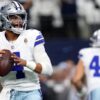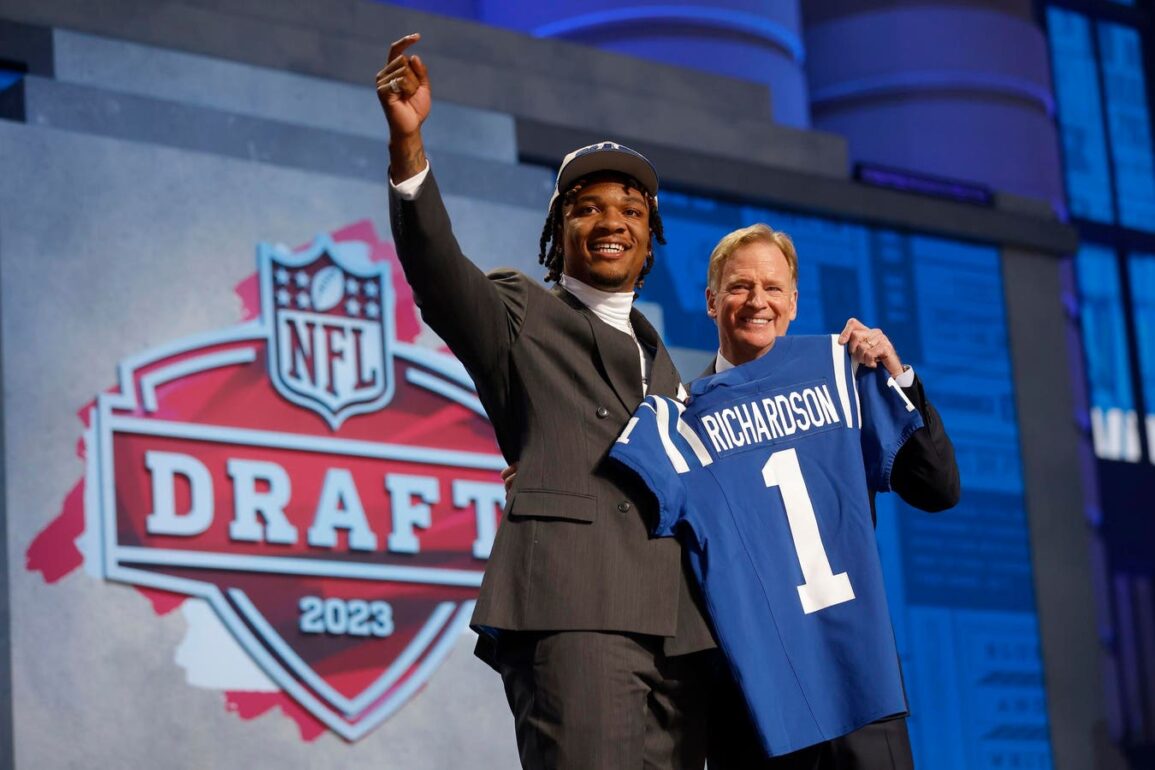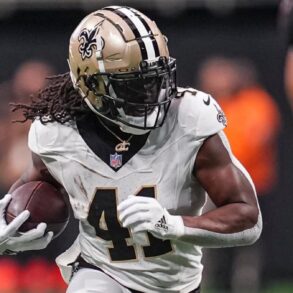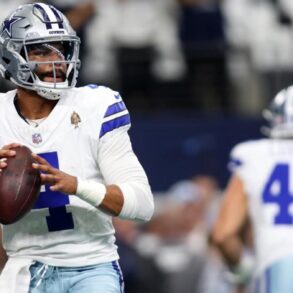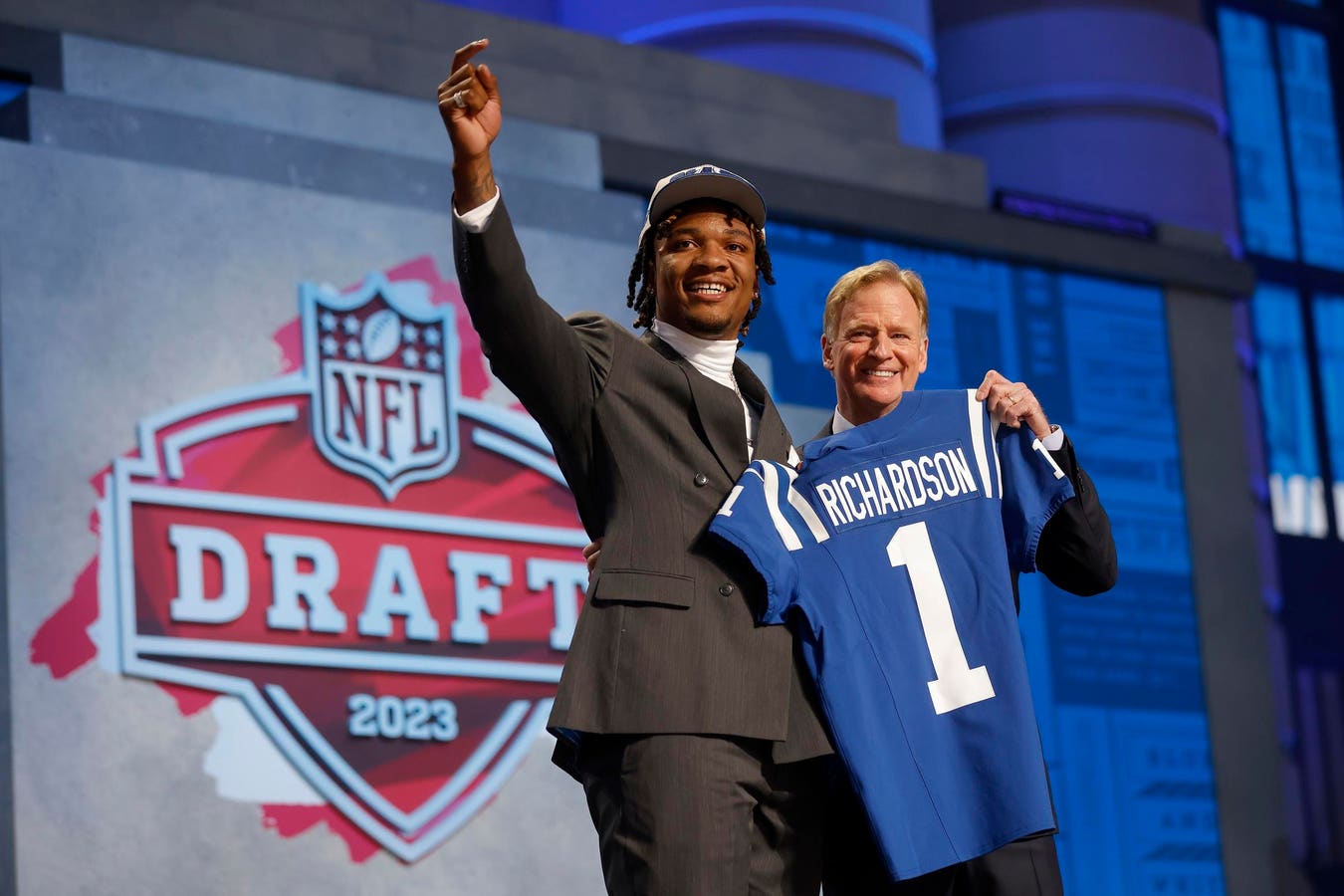
The quarterback development dilemma may be reaching its breaking point across the NFL, as now two of the three quarterbacks taken in the first round of the 2023 draft have already lost their starting role.
Former number one overall pick Bryce Young was replaced by veteran Andy Dalton just two games into the 2024 season, and just six weeks later Joe Flacco will be taking the keys to the Indianapolis Colts instead of fourth overall selection Anthony Richardson.
While Richardson made it longer into the 2024 season than Young, Richardson only completed his 10th career start before replacing the helmet with the headset after missing the majority of his rookie year due to season-ending shoulder surgery.
Young has 21 games and counting under center for the Carolina Panthers in his young career, as Young has already won the starting role back over Dalton as of last week. But this position is likely as fluid as you will see in the NFL.
Richardson’s time as Indianapolis’ starter is likely far from over as well, as both of these first-round picks have at least two years under contract with the fifth-year option, but it does raise the question: why did Richardson get less than half of the opportunities of Young?
NEW ORLEANS, LOUISIANA – DECEMBER 31: Bryce Young #9 of the Alabama Crimson Tide celebrates after … [+]
And for both of these former collegiate stars, how much of these results are their faults?
For those who only watch the professional level of football, the scouting report on these two quarterbacks was vastly different.
Young was a two-year star at Alabama, winning the 2021 Heisman after compiling 4,872 passing yards, 47 touchdowns to 7 interceptions. He finished his collegiate career with a 24-4 overall record, and if it were not for his 5 ’10, 200 lb frame, he would have been an undisputable number 1 overall selection.
Even with coaches’ hesitation on his ability to stay in the pocket, his body of work in college did not enough to not only get selected first overall but for the Panthers to mortgage their future first-round picks to move up and select him.
Richardson on the other hand was the opposite end of the spectrum. With basically just one season as the starter for the University of Florida, Richardson was the textbook definition of a project.
Finishing his redshirt sophomore season with 2,549 years and 17 touchdowns to 9 interceptions, Richardson struggled with accuracy, only completing 53.8% of his total passing attempts.
When he was able to complete a pass, or when a play broke down, is where Richardson raised his draft stock with his athleticism. The former Gator led all of college football with 14.5 yards per completion, and he collected 654 rushing yards and 9 rushing touchdowns in just 12 games.
At 6 ‘4, 235 lbs, the ability to run effectively, and above average arm strength and accuracy down the field was the dream combination for a coaching staff.
INDIANAPOLIS, INDIANA – MARCH 04: Quarterback Anthony Richardson of Florida participates in a drill … [+]
For their professional comparisons, Young received similar treatment to Kyler Murray with the Cardinals, and Richardson had the upside of becoming the next Josh Allen.
The only issue is, that it is very difficult for a player to do what Murray and Allen have done, which is why the first round of the NFL draft has become a lottery system for teams looking for a franchise quarterback.
So, why is Richardson already seeing the sideline after just 10 games, when Young seems to have a longer leash? The first reason is the specifics of their struggles.
Young has struggled to move the ball down the field consistently, which is due to his ability to read an NFL defense. In his 21 games, Young has just 161.9 yards per game, which is the 42nd-best in the league since 2023.
His yards per attempt have been even worse, as he sits at just 5.4 which is 56th-best over the span. And despite Young taking chances and making the safeties honor his ability to take the top off, he still has just 13 total passing touchdowns to 15 career interceptions.
Richardson on the other hand has seemed to transfer his collegiate struggles to the professional level, but with this has come the ability for explosive plays.
While Richardson has been able to surpass Young already in some statistical categories, including his 7.1 yards per attempt and 1,535 passing yards in less than half the games, his inaccuracy from short and medium range has made the explosive plays much less common than we saw in Florida.
With a 50.2% completion percentage, PJ Walker has the worst completion percentage of any quarterback in the past two years. And Walker only has 111 passing attempts over that span.
What these issues represent is the most effective way to overcome the struggles, which are different for both the players.
While working as the backup against the starting defense will help with reading a defense and learning tendencies, nothing replicated game speed and game action. And when your team is on pace for a third year of a bottom-five overall record, it is a lot easier to let Young continue to learn on the job.
For the Colts however, sitting at 4-4 with all 4 of their losses coming in one score game, it is a lot more difficult to keep the team competitive while Richardson struggles with an aspect of the game that Flacco can provide now. Especially when a quarterback learns accuracy in practice more than in-game action.
The third aspect that went into these decisions was what these teams gave up for their franchise centerpieces. While the fourth overall selection is nothing to scoff at, picking a quarterback with your first pick has become a true lottery. And if you do not win the lottery, it’s best to throw the piece of paper.
When you trade future opportunities to play the lottery again for the best odds at winning one year’s lottery, it is a bit harder to swallow the fact that you lost. And while there is still talent and potential in both of these quarterbacks, the time to wait is no longer existent.
Whether this is fair to the athlete or not is irrelevant, as the NFL is the fastest-moving league with the smallest sample sizes. But, despite the blueprint of a franchise quarterback on a rookie year deal being the ideal architecture of a Super Bowl formula, it is only a matter of time until enough failed quarterback boot camps lead to a change in philosophy.
This post was originally published on this site be sure to check out more of their content.




